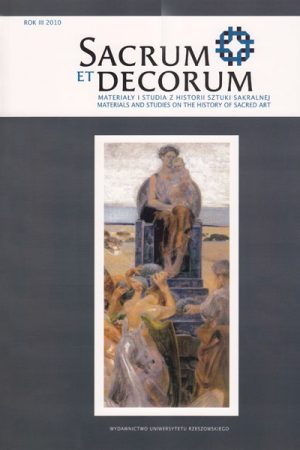Od Lenina do Jana Pawła II. Stan badań nad twórczością Mariana Koniecznego oraz kilka uwag o rzeźbach religijnych jego autorstwa
Słowa kluczowe:
Marian Konieczny, monumentalna rzeźba pomnikowa, akademizm, realizm, sztuka religijnaAbstrakt
Marian Konieczny (ur. 1930) to postać szalenie kontrowersyjna w dziejach monumentalnej rzeźby polskiej 2 poł. XX wieku. Uczeń Ksawerego Dunikowskiego, a zarazem absolwent Akademii Sztuk Pięknych w Leningradzie, w swoim czasie członek PZPR, rektor ASP w Krakowie oraz poseł na Sejm PRL, mimo że jest autorem kilkudziesięciu pomników, nigdy nie cieszył się uznaniem i zainteresowaniem ze strony krytyków i historyków sztuki. Badacze piszący o polskiej rzeźbie pomnikowej pomijali jego osobę znaczącym milczeniem, nie mogąc wybaczyć mu, że był autorem zarówno Pomnika Bohaterów Warszawy w Warszawie (1964), już nieistniejącego Pomnika Lenina w Nowej Hucie (1973), Pomnika Walk Rewolucyjnych na Rzeszowszczyźnie w Rzeszowie (1973) czy Pomnika Stanisława Wyspiańskiego w Krakowie (1981). Jakby na przekór wszystkim swoim przeciwnikom, ten niezwykle pracowity, wyjątkowo zdolny i wszechstronny rzeźbiarz, najchętniej wypowiadający się w konwencji realistycznej, po burzliwych przemianach politycznych roku 1989 nie tylko nie zniknął z polskiego życia artystycznego, ale nadal wygrywa konkursy i otrzymuje zlecenia na nowe pomniki, w tym także na prace o charakterze religijnym. Jego dziełem jest m.in. monumentalne Epitafium Królewskie w Archikatedrze Poznańskiej (1995) czy Pomnik Jana Pawła II przed bazyliką w Licheniu (1999). Obiektywne przybliżenie biografii i dorobku Mariana Koniecznego i twórców jego pokroju są niezbędne dla nakreślenia pełnego obrazu polskiej rzeźby monumentalnej XX i początku XXI wieku.
Downloads
Pobrania
Opublikowane
Jak cytować
Numer
Dział
Licencja
Prawa autorskie (c) 2010 Sacrum et Decorum

Utwór dostępny jest na licencji Creative Commons Uznanie autorstwa – Użycie niekomercyjne – Bez utworów zależnych 4.0 Międzynarodowe.
Zgodnie z polityką Open Access autorzy zachowują pełnię praw autorskich do swoich artykułów – bez ograniczeń.
Autorzy mogą deponować swoje artykuły w wybranym przez siebie repozytorium.


